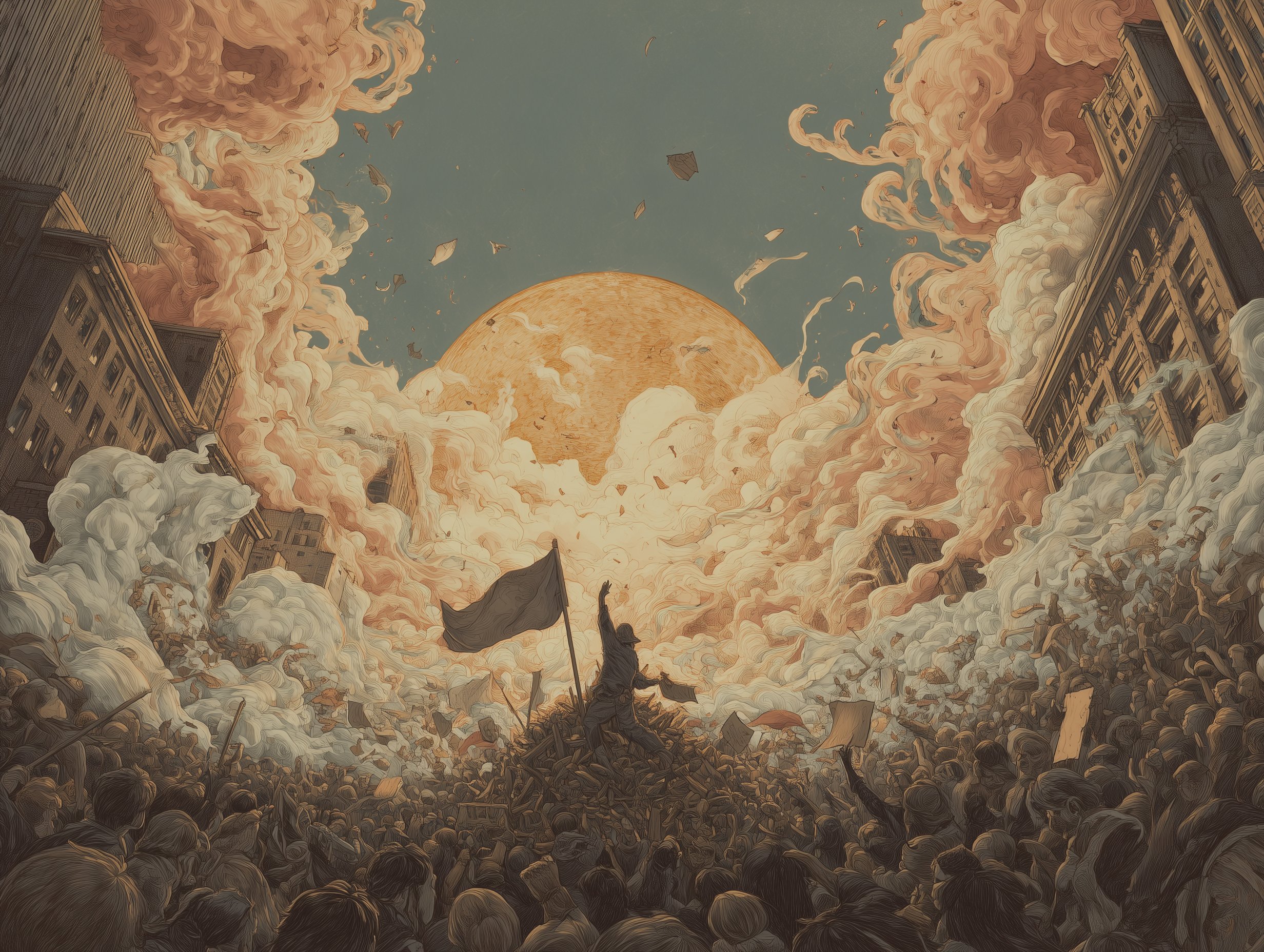
Art as Witness and Weapon
Participatory Art, Social Justice, and the Power of Representation
In a world where representation often protects the powerful and erases the vulnerable, Witness and Weapon was created to ask deeper questions:
Who gets seen? Who gets heard? And what happens when art speaks what institutions refuse to?
This course exists because some stories have not simply been forgotten—they have been deliberately silenced. Marginalized communities have long used creative practice to bear witness, survive, and resist. But too often, these narratives are excluded, misrepresented, or appropriated. This course offers a space to engage with those voices ethically—through learning, reflection, and creative practice.
What Makes This Course Unique
It’s interdisciplinary, drawing from criminal psychology, feminist theory, trauma studies, decolonial thinking, and cultural memory.
It’s applied, culminating in a personal or interpretive contribution to a collective zine or online exhibition.
It’s accessible but rigorous, designed for both professionals and committed learners without formal degrees.
It brings global and local case studies together with the participant’s own context and creativity.
Instructor Expertise
This course is led by experienced educators and practitioners with backgrounds in both research and artistic engagement:
A PhD researcher in criminal psychology with distinction at MSc level, specializing in marginalized narratives and cultural trauma.
A visual artist and art historian with expertise in contemporary art, gender, and hybrid identities, with international exhibitions and curatorial experience.
Together, they bring a rare mix of academic credibility, field experience, and artistic vision—grounding the course in both theory and lived relevance.
What You Will Learn
Across 8 thematic modules (and 20 carefully structured lessons), you will explore:
Theories of visibility, silencing, and narrative power (Tuchman, Fricker, hooks, Spivak, Mulvey)
Participatory and testimonial art practices (PhotoVoice, Monument Quilt, Arpilleras)
Ethical storytelling and positionality
Collective memory, aesthetic resistance, and the politics of gaze
Each module integrates video content, curated reading/viewing lists, reflective writing, and creative tasks.
Final Outcome
Participants choose one of three creative project tracks:
Interpretive — critically respond to an existing work or narrative
Reflective — share a personal story or silenced truth
Curatorial — reframe or re-present existing archives ethically
All projects are compiled into a collaborative digital zine and online exhibition, shared with a broader public audience (with consent).
Course Duration: 3–4 months
Total Modules: 8 thematic modules (each with 2–3 lessons)
Total Lessons: 20 structured lessons
Format: Fully online, self-paced with video/audio, reading PDFs, reflective writing prompts, creative activities, and a final collaborative zine or online exhibition
What You’ll Gain
A deeper understanding of the intersection of art and justice
A meaningful personal or professional creative project
A connection to a wider network of engaged learners and change-makers
This is not just a course. It’s a call to witness—and to act.
If you are ready to explore how art can disrupt silence, document truth, and amplify marginalized voices—this is your place.
-
-
Lesson 1.1: What is Visibility?
Who do we see? Who disappears in plain sight? Discover how media and society create public invisibility.
Who do we see? Who disappears in plain sight? Discover how media and society create public invisibility.
-
Lesson 1.2: Invisibility as Violence
Silence isn’t neutral—it can be a form of harm. We look at how structural silence marginalizes entire groups.
Silence isn’t neutral—it can be a form of harm. We look at how structural silence marginalizes entire groups.
-
Lesson 1.3: Who Controls the Frame?
Visibility is curated. Who decides what gets shown? This lesson tackles media, museums, and politics.
Visibility is curated. Who decides what gets shown? This lesson tackles media, museums, and politics.
-
-
-
Lesson 2.1: Art as Witness
Art can act as evidence. Explore how zines, murals, and performance art document lived injustice.
Art can act as evidence. Explore how zines, murals, and performance art document lived injustice.
-
Lesson 2.2: Survivor Storytelling and Consent
Not all stories want to be shared. What does it mean to share ethically?
Not all stories want to be shared. What does it mean to share ethically?
-
Lesson 2.3: Case Studies of Testimonial Projects
Explore real-world participatory testimony art projects (e.g., Monument Quilt, PhotoVoice)
Explore real-world participatory testimony art projects (e.g., Monument Quilt, PhotoVoice)
-
-
-
Lesson 3.1: The Gaze and the Other
Who is looking? Who is being seen? We explore the politics of the gaze.
Who is looking? Who is being seen? We explore the politics of the gaze.
-
Lesson 3.2: Speaking Over or Speaking With?
Well-meaning people can do harm by "giving voice." How do we co-create narratives?
Well-meaning people can do harm by "giving voice." How do we co-create narratives?
-
-
-
Lesson 4.1: What is Participatory Art?
From mural walls to activist collages, discover how community-driven art works
From mural walls to activist collages, discover how community-driven art works
-
Lesson 4.2: Ethics in Ethnographic Art
What happens when artists or researchers enter communities? How do we share authorship?
What happens when artists or researchers enter communities? How do we share authorship?
-
Lesson 4.3: Landmark Projects
Study groundbreaking participatory projects and their real-world effects
Study groundbreaking participatory projects and their real-world effects
-
-
-
Lesson 5.1: Memory as Protest
How do we remember when we were told to forget? Learn how visual language resists collective amnesia
How do we remember when we were told to forget? Learn how visual language resists collective amnesia
-
Lesson 5.2: Reclaiming Narratives through Visual Culture
How have oppressed communities transformed their grief into art?
How have oppressed communities transformed their grief into art?
-
-
-
-
Your Expert Guides
Led by Elina, a PhD researcher in criminal psychology and cultural trauma and Amanda, a visual artist/art historian with expertise in identity, memory, and political aesthetics. Developed through years of research, exhibitions, and fieldwork in contexts of silence, loss, and resistance.